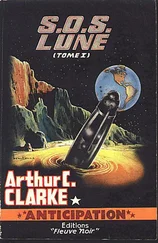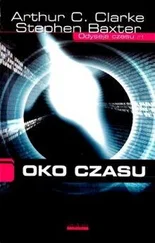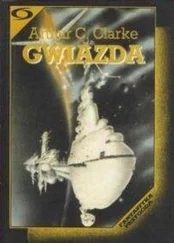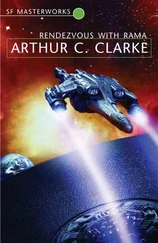Arthur Clarke - A Meeting with Medusa
Здесь есть возможность читать онлайн «Arthur Clarke - A Meeting with Medusa» весь текст электронной книги совершенно бесплатно (целиком полную версию без сокращений). В некоторых случаях можно слушать аудио, скачать через торрент в формате fb2 и присутствует краткое содержание. Год выпуска: 1971, Жанр: Фантастика и фэнтези, на английском языке. Описание произведения, (предисловие) а так же отзывы посетителей доступны на портале библиотеки ЛибКат.
- Название:A Meeting with Medusa
- Автор:
- Жанр:
- Год:1971
- ISBN:нет данных
- Рейтинг книги:5 / 5. Голосов: 1
-
Избранное:Добавить в избранное
- Отзывы:
-
Ваша оценка:
- 100
- 1
- 2
- 3
- 4
- 5
A Meeting with Medusa: краткое содержание, описание и аннотация
Предлагаем к чтению аннотацию, описание, краткое содержание или предисловие (зависит от того, что написал сам автор книги «A Meeting with Medusa»). Если вы не нашли необходимую информацию о книге — напишите в комментариях, мы постараемся отыскать её.
Nominated for the Hugo Award for Best Novella in 1972.
A Meeting with Medusa — читать онлайн бесплатно полную книгу (весь текст) целиком
Ниже представлен текст книги, разбитый по страницам. Система сохранения места последней прочитанной страницы, позволяет с удобством читать онлайн бесплатно книгу «A Meeting with Medusa», без необходимости каждый раз заново искать на чём Вы остановились. Поставьте закладку, и сможете в любой момент перейти на страницу, на которой закончили чтение.
Интервал:
Закладка:
A Meeting with Medusa
by Arthur C. Clarke
1. A Day to Remember
The Queen Elizabeth was over three miles above the Grand Canyon, dawdling along at a comfortable hundred and eighty, when Howard Falcon spotted the camera platform closing in from the right. He had been expecting it—nothing else was cleared to fly at this altitude—but he was not too happy to have company. Although he welcomed any signs of public interest, he also wanted as much empty sky as he could get. After all, he was the first man in history to navigate a ship three-tenths of a mile long.
So far, this first test flight had gone perfectly; ironically enough, the only problem had been the century-old aircraft carrier Chairman Mao, borrowed from the San Diego Naval Museum for support operations. Only one of Mao’s four nuclear reactors was still operating, and the old battle-wagon’s top speed was barely thirty knots. Luckily, wind speed at sea level had been less than half this, so it had not been too difficult to maintain still air on the flight deck. Though there had been a few anxious moments during gusts, when the mooring lines had been dropped, the dirigible had risen smoothly, straight up into the sky, as if on an invisible elevator. If all went well, Queen Elizabeth IV would not meet Chairman Mao again for another week.
Everything was under control, all test instruments gave normal readings. Commander Falcon decided to go upstairs and watch the rendezvous. He handed over to his second officer, and walked out into the transparent tubeway that led through the heart of the ship. There, as always, he was overwhelmed by the spectacle of the largest single space ever enclosed by man.
The ten spherical gas cells, each more than a hundred feet across, were ranged one behind the other like a line of gigantic soap bubbles. The tough plastic was so clear that he could see through the whole length of the array, and make out details of the elevator mechanism, more than a third of a mile from his vantage point. All around him, like a three-dimensional maze, was the structural framework of the ship the great longitudinal girders running from nose to tail, the fifteen hoops that were the circular ribs of this sky-borne colossus, and whose varying sizes defined its graceful, streamlined profile.
At this low speed, there was little sound, merely the soft rush of wind over the envelope and an occasional creak of metal as the pattern of stresses changed. The shadowless light from the rows of lamps far overhead gave the whole scene a curiously submarine quality, and to Falcon this was caused by the spectacle of the translucent gasbags. He had once encountered a squadron of large but harmless jellyfish, pulsing their mindless way above a shallow tropical reef, and the plastic bubbles that gave Queen Elizabeth her lift often reminded him of these especially when changing pressures made them crinkle and scatter new patterns of reflected light.
He walked down the axis of the ship until he came to the forward elevator, between gas cells one and two. Riding up to the Observation Deck, be noticed that it was uncomfortably hot, and dictated a brief memo to himself on his pocket recorder.
The Queen obtained almost a quarter of her buoyancy from the unlimited amounts of waste heat produced by her fusion power plant. On this lightly loaded flight, indeed only six of the ten gas cells contained helium, the remaining four were full of air. Yet she still carried two hundred tons of water as ballast. However, running the cells at high temperatures did produce problems in refrigerating the access ways, it was obvious that a little more work would have to be done there.
A refreshing blast of cooler air hit him in the face when he stepped out onto the Observation Deck and into the dazzling sunlight streaming through the plexiglass roof. Half a dozen workmen, with an equal number of superchimp assistants, were busily laying the partly completed dance floor, while others were installing electric wiring and fixing furniture. It was a scene of controlled chaos, and Falcon found it hard to believe that everything would be ready for the maiden voyage, only four weeks ahead. Well, at least it was not his problem, thank goodness. He was merely the Captain, not the Cruise Director.
The human workers waved to him, and the “simps” flashed toothy smiles, as he walked through the confusion, into the already completed Skylounge. This was his favourite place in the whole ship, and he knew that once she was operating he would never again have it all to himself. He would allow himself just five minutes of private enjoyment.
He called the bridge, checked that everything was still in order, and relaxed into one of the comfortable swivel chairs. Below, in a curve that delighted the eye, was the unbroken silver sweep of the ship’s envelope. He was perched at the highest point, surveying the whole immensity of the largest vehicle ever built. And when he had tired of that, all the way out the horizon, was the fantastic wilderness carved by the Colorado River in half a billion years of time.
Apart from the camera platform (it had now fallen back and was filming irom amidships), he had the sky to himself. It was blue and empty, clear down to the horizon. In his grandfather’s day, Falcon knew, it would have been streaked with vapour trails and stained with smoke. Both had gone: the aerial garbage had vanished with the primitive technologies that spawned it, and the long-distance transportation of this age forced to beyond the stratosphere for any sight or sound of it to reach Earth again, the lower atmosphere belonged to the birds and the clouds and now to Queen Elizabeth IV.
It was true, as the old pioneers had said at the beginning of the twentieth century: this was the only way to travel, in silence and luxury, breathing the air around you and not cut off from it, near enough to the surface to watch the ever-changing beauty of land and sea. The subsonic jets of the 1980s, packed with hundreds of passengers seated ten abreast, could not even begin to match such comfort and spaciousness.
Of course, the Queen would never be an economic proposition, and even if her projected sister ships were built, only a few of the world’s quarter of a billion inhabitants would ever enjoy this silent gliding through the sky. But a secure and prosperous global society could afford such follies and indeed needed them for their novelty and entertainment. There were at least a million men on Earth whose discretionary income exceeded a thousand new dollars a year, so the Queen would not lack for passengers.
Falcon’s pocket communicator beeped. The copilot was calling from the bridge.
“OK for rendezvous, Captain? We’ve got all the data we need from this run, and the TV people are getting impatient.”
Falcon glanced at the camera platform, now matching his speed a tenth of a mile away.
“OK,” he replied. “Proceed as arranged. I’ll watch from here.”
He walked back through the busy chaos of the Observation Deck so that he could have a better view amidships. As he did so, he could feel the change of vibration underfoot, by the time he had reached the rear of the lounge, the ship had come to rest. Using his master key, he let himself out onto the small external platform flaring from the end of the deck, half a dozen people could stand here, with only low guardrails separating them from the vast sweep of the envelope and from the ground, thousands of feet below. It was an exciting place to be, and perfectly safe even when the ship was travelling at speed, for it was in the dead air behind the huge dorsal blister of the Observation Deck. Nevertheless, it was not intended that the passengers would have access to it, the view was a little too vertiginous.
Читать дальшеИнтервал:
Закладка:
Похожие книги на «A Meeting with Medusa»
Представляем Вашему вниманию похожие книги на «A Meeting with Medusa» списком для выбора. Мы отобрали схожую по названию и смыслу литературу в надежде предоставить читателям больше вариантов отыскать новые, интересные, ещё непрочитанные произведения.
Обсуждение, отзывы о книге «A Meeting with Medusa» и просто собственные мнения читателей. Оставьте ваши комментарии, напишите, что Вы думаете о произведении, его смысле или главных героях. Укажите что конкретно понравилось, а что нет, и почему Вы так считаете.












